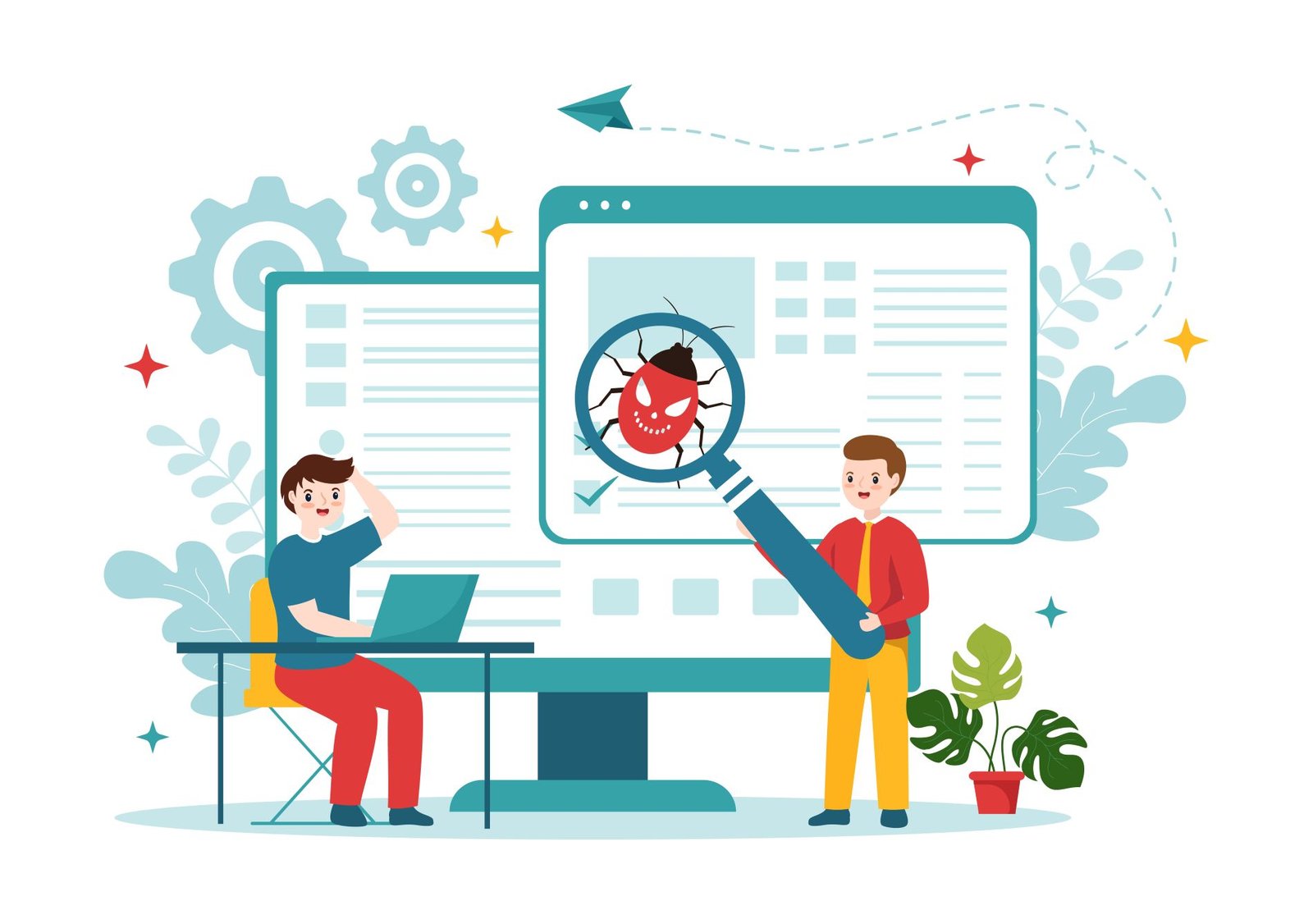In the world of software development, ensuring a seamless user experience is crucial. While unit and integration tests help verify individual components, they don’t always guarantee that the entire system functions correctly from start to finish. This is where End-to-End (E2E) Testing comes in. E2E testing evaluates the entire application flow, from user interactions to backend processes, ensuring everything works as expected.
Imagine you’re launching an e-commerce website. You’ve tested individual components—such as the login system, the shopping cart, and the payment gateway—separately. Everything works fine in isolation. But what happens when a real user interacts with your site from start to finish? What if they add items to the cart, enter their shipping address, and the payment fails due to an undetected backend issue? This is where End-to-End (E2E) Testing steps in.
E2E testing ensures that an application functions seamlessly across its entire workflow, simulating real-world user interactions. It tests everything—from the UI to backend processes—helping developers identify hidden flaws before they impact end users.
In this article, we’ll explore what E2E testing is, why it’s essential, and how you can execute it successfully. We’ll also discuss best practices, challenges, and examples to help you implement it effectively.
On This Page
Table of Contents
What is End-to-End Testing?
End-to-End Testing is a software testing methodology that examines the complete flow of an application from start to finish. It ensures that all integrated components, including UI, databases, APIs, and third-party services, work together as intended.
How It Differs from Other Testing Methods
| Testing Type | Scope | Purpose |
|---|---|---|
| Unit Testing | Tests individual components | Ensures a single function/module works correctly |
| Integration Testing | Tests interactions between components | Checks if different parts of the system communicate properly |
| End-to-End Testing | Tests the entire application workflow | Ensures the entire user journey functions as expected |
Unlike unit testing, which verifies isolated functions, and integration testing, which ensures components work together, E2E testing covers the entire system to provide real-world reliability.
Why is End-to-End Testing Important?
Skipping E2E testing can lead to disastrous consequences—such as broken features, frustrated users, and financial losses. Here’s why it’s crucial:
- Detects critical system failures before users experience them
- Ensures smooth user experience across different devices and browsers
- Reduces post-release defects, saving time and costs
- Increases confidence in the software before deployment
- Verifies third-party integrations (e.g., payment gateways, email notifications)
Example: Imagine a banking app where a user transfers money, but the balance doesn’t update due to an untested API issue. E2E testing could prevent such scenarios.
Key Components of End-to-End Testing
E2E testing covers multiple aspects of an application:
- User Interface (UI) Testing – Verifies elements like buttons, forms, and navigation work properly.
- Backend Services & APIs – Ensures data flows correctly between frontend, backend, and external services.
- Database Validation – Checks if data is stored, retrieved, and updated accurately.
- Third-party Integrations – Tests external services like payment processors, email services, and analytics tools.
Types of End-to-End Testing
There are two primary types of E2E testing:
1. Manual E2E Testing
- Conducted by human testers following predefined test cases.
- Used for exploratory testing and UI/UX evaluations.
- Example: A tester manually completes a purchase on an e-commerce site to verify the checkout flow.
2. Automated E2E Testing
- Uses test scripts and tools to automate workflows.
- Ideal for repetitive and complex test cases.
- Example: A script in Selenium or Cypress runs login, search, and checkout flows without human intervention.
| Factor | Manual E2E Testing | Automated E2E Testing |
|---|---|---|
| Speed | Slower | Faster |
| Accuracy | Prone to human errors | More reliable |
| Best for | UI/UX, exploratory tests | Regression and large-scale tests |
How to Execute End-to-End Testing Successfully
Step 1: Define Clear Test Scenarios
- Identify critical user journeys (e.g., login, checkout, order tracking).
- Consider edge cases (e.g., failed payments, session timeouts).
Step 2: Set Up a Proper Test Environment
- Use a staging environment that mirrors production.
- Ensure all dependencies (e.g., databases, APIs) are accessible.
Step 3: Choose the Right Testing Tools
Popular tools include:
- Selenium (Web automation)
- Cypress (Fast and reliable for UI testing)
- Playwright (Modern alternative to Selenium)
Step 4: Write and Execute Test Scripts
- Automate tests using realistic user actions.
- Use assertions to validate expected outcomes.
Step 5: Monitor and Analyze Results
- Track test failures and logs.
- Fix issues and rerun tests to confirm fixes.
Challenges in End-to-End Testing and Solutions
| Challenge | Solution |
|---|---|
| Flaky Tests | Implement retries and stable locators |
| Test Environment Issues | Use containerized environments (e.g., Docker) |
| Long Execution Time | Run tests in parallel |
Best Practices for Effective E2E Testing
- Prioritize critical user flows over less important ones.
- Maintain test scripts regularly to avoid outdated tests.
- Integrate tests into CI/CD pipelines for continuous validation.
- Use real-world test data to simulate actual scenarios.
- Run tests on multiple browsers and devices to ensure cross-compatibility.
WrapUP
End-to-End testing is an essential step in the software development lifecycle, ensuring a flawless user experience. By simulating real-world scenarios, it helps catch critical bugs before they reach production. While challenges exist, leveraging best practices and automation tools can make E2E testing more efficient and reliable.
Whether you’re developing a banking app, an e-commerce platform, or a SaaS product, incorporating E2E testing into your workflow will lead to a more robust and user-friendly application. Start implementing E2E testing today and build software that your users can trust!

FAQs
What is End-to-End (E2E) Testing?
E2E testing is a software testing approach that verifies the entire application workflow from start to finish, ensuring all integrated components function correctly.
How is E2E Testing different from Unit and Integration Testing?
Unit Testing tests individual components in isolation.
Integration Testing verifies communication between multiple components.
E2E Testing tests the entire user journey, ensuring real-world functionality.
When should End-to-End Testing be performed?
E2E testing should be conducted before deployment to production, after unit and integration testing, to ensure the software functions correctly across all layers.
What are some popular tools for E2E Testing?
Selenium – Web automation
Cypress – Fast and reliable UI testing
Playwright – Modern alternative to Selenium
TestCafe – Cross-browser end-to-end testing
Should E2E Testing be manual or automated?
It depends on the use case:
Manual E2E Testing is good for UI/UX validation and exploratory testing.
Automated E2E Testing is best for regression and large-scale testing.
What are the key challenges in E2E Testing?
Flaky tests due to inconsistent environments
Long execution time for large test suites
Test maintenance due to frequent UI changes
How can I make E2E tests more reliable?
Use stable selectors instead of dynamic ones.
Implement retry mechanisms for flaky tests.
Run tests in isolated environments using containers (e.g., Docker).
Use parallel execution to speed up testing.
Can E2E Testing replace other types of testing?
No. E2E testing should complement unit and integration testing, not replace them. A balanced testing strategy includes all three.
How does E2E Testing fit into CI/CD pipelines?
Tests can be automated and triggered on code commits.
Running E2E tests before deployment ensures bug-free releases.
Failures in E2E tests can stop faulty builds from being deployed.









